Scouting Riccardo Calafiori
Is the gallivanting Bologna defender the right choice for Arsenal's left? In this enormous scouting report, we pore through the tape and numbers to study his quality, profile, and projection
“It’s a coming-of-age story, and I want to show how this—one’s coming of age—has to be earned. It’s not given to anyone. It takes a certain single-minded purpose. It takes self-awareness, a desire to go there. And a willingness to confront all the very fearsome and dangerous elements of your life—your past, your history—that you need to confront to become as much of a free agent as you can.” — Bruce Springsteen
Football moves fast.
Jadon Sancho has had quite the year. Lautaro Martínez, too.
I’m also certain you can name a few players who have seen their reputations yo-yo in the few short, bouncy weeks of the Euros. Recently so maligned, Marc Cucurella is taking clumsy victory laps on his haters. Others have seen their public image knock or be knocked. The likes of Phil Foden and Harry Kane have had trouble reconciling their league production with their output on a different stage.
We’re no strangers to these changes in fortune. Arsenal, now a credible challenger for the highest trophies in the land — and with eyes narrowly cast on dethroning the likes of Manchester City and Real Madrid — are two short years removed from a season devoid of European competition.
In such a journey back up, what unites us all?
Sooner or later, everyone plays on the frozen turf at Bodø/Glimt.
Perhaps you’ll remember this team’s beleaguered performance on the Norwegian tundra in October 2022. Or perhaps you barely do, which is apt. The two sides combined for two shots on target. Everything was bad. Except that deflected, fortunate Saka strike.
As atypical as that environment was, it wasn’t really an atypical performance in that competition. It wouldn’t be long before Arsenal bowed out of the Europa with a relative whimper.
They weren’t the first top club to experience frustration against the Norwegian top flight’s crown jewel.
It was the same location where Jose Mourinho’s Roma famously lost 6-1 the year prior.
After managing 1,000+ matches in his career, it was the very first time a Mourinho side had conceded six or more goals in a single contest. It led to YouTube comments like “imagine losing by five goals to a team with a forward slash in their name.” (I’m paraphrasing.) The defeat was so thorough that, when Roma earned their spot in the victorious final of that very same Europa Conference League competition — football moves fast, remember — they offered free tickets to the 166 fans who had earlier ventured up north to support the Giallorossi.
The starting left-back for that earlier walloping in Norway?
Darling of the Euros. Star of Italy. A player now coveted by Juventus, Chelsea, and many others — including, notably for this piece, Mikel Arteta and Arsenal.
We’re talking, of course, about Riccardo Calafiori.
🗂 Studied by The Special One
“Mourinho?” said Calafiori to Sportweek.
“With him I also started quite well then there was the match against Bodø. From there, things went downhill. He sent me to the bench and decided to rely on others, but my need and desire were to play.”
He wanted to be clear that there were no lingering feelings.
“It was his choice, of course, but I’ll also tell you something: Mou and I talk, he wrote me several messages, there’s a nice relationship between us.”
Calafiori was clearly intriguing to Mourinho. Not long after signing a three-year-deal to coach in the Italian capital, Mourinho posted an Instagram of himself “studying” — which is what people in the business call “watching clips on Wyscout.”
(He’s just like us.)
The player pulled up was Calafiori.
There was much to study.
Calafiori was always an eye-catching player, and not just to my wife. A celebrated prospect out of the Roma Academy, he was known for his skill and athleticism as a left-back.
The best-laid plans were derailed by an honestly disgusting, borderline-assaultive stamp by a Viktoria Plzen opponent in a UEFA Youth League contest that left his knee destroyed. The phrases “career-ending” and “career-threatening” were bandied about, and if you’re unfortunate enough to see the clip, you’ll see why.
When Edin Džeko netted a Champions League hat-trick for the senior squad, he dedicated it to the 16-year-old, holding his shirt after the game, as if to underscore the precariousness of the situation.
Football may move fast, but rehab doesn’t. You need support.
Current Roma coach Daniele De Rossi comes off very well in the story of Calafiori’s recovery.
“When I was injured, he took me home, waited for me, took me back to the training center,” said Calafiori. “An important bond was formed in his final year as a player. We spent a lot of time together, I never expected that. If I think back to those days, when we were in the car together: it was almost a dream for me. He accompanied me home and took me to Trigoria, I don’t know what went through his mind to do this with me. He certainly saw that I was in a difficult moment.”
Some naivety helped, too.
“My strength came from the fact I was so young I didn’t think too much about it and grasp the gravity of the situation,” he has said. “I never thought about giving up and calling it a day. I couldn’t wait to get back on the pitch.”
His stubborn return turned storybook.
After an arduous but-way-shorter-than-expected rehab stint, he was soon making his league debut as an 18-year-old LWB against Juventus. He displayed his range of skills, eventually winning a decisive penalty.
His first full game was in the Europa against Young Boys. He shot five times from left-back and nailed this one.
Soon, he was making a certain Ajax defender fall down (OK, OK, it was a fellow teenager by the name of … Jurriën Timber 😬), and assisting the very player who had held up his number those years before.
Grazie, signor Džeko.
The goal sent Roma to the Europa semi-finals against Manchester United.
All of this was on file for Mourinho when he arrived the next May. And all of it went according to plan.
Until it didn’t.
I just watched some of the Bodø game in question. Calafiori did, in fact, struggle. He fell while marking. He got caught up the pitch. He showed a few qualities of a young player who is uncertain of what their teammate (specifically, Marash Kumbulla) would do. At one point, Calafiori laid up to draw his marker offside, but Kumbulla kept wandering back, keeping him on.
It was a night to forget. That fucking turf.
As a result, Calafiori wouldn’t be present with his Roma teammates to hoist the European silverware. He was loaned in January of that year.
Here’s a sliding doors tweet for you, courtesy of Fabrizio Romano:
“AS Roma are still in talks with Arsenal for Maitland-Niles. Discussion ongoing about loan fee and buy option. Player’s open to accept but it’s not fully agreed between clubs yet #AFC #ASRoma. Meanwhile, Roma fullback Riccardo Calafiori leaves the club to join Cagliari on loan.”
That was a jump of the gun. Calafiori’s next steps would actually take him to Genoa, and it would not be the first ebb or flow left in Calafiori’s career. That loan wouldn’t work out, and it led to Roma selling the defender on a cut-rate deal to FC Basel.
In Switzerland, a star was born.
Before too long, he was back in Italy. Before too long, he was helping Bologna earn their first Champions League appearance since 1964, playing a key role in a team that surrendered only 32 goals in 38 matches. Before too long, he was Italy’s best player at the Euros — leaving behind one of the tournament’s indelible moments.
Football moves fast.
🎯 The profile to target
Why have Arsenal zeroed in on such a player?
We’ll start with a long excerpt from our LB/LCB piece.
You want to target a player for the immediate opportunity — but not just the immediate opportunity. The player should align with a stable overarching footballing vision, and, like visions of sugarplums, there should be multiple deployments of the player bouncing around in our heads. This isn’t just how you succeed. This is how you risk-proof your investments.
This was laid out well in a typically-brilliant piece about Kai Havertz by Amy Lawrence in The Athletic. The examples are everywhere.
“Ben White was ostensibly a centre-half but has been remoulded into a marauding right-back. Takehiro Tomiyasu plays anywhere across the defensive line. Jurrien Timber can do that, too. Oleksandr Zinchenko is the signature hybrid. Bukayo Saka used to play anywhere on the left flank and now is established as a right-winger. Declan Rice has the fanbase continually debating whether he should be more of a No 6 or a No 8, when they are not thanking their lucky stars they have him in their No 41 shirt. Gabriel Jesus can usually be found scurrying around far deeper or wider than a traditional striker.”
Just this week, Rice said this:
“My first discussions with [Mikel Arteta] was to go to Arsenal and play as a six. But, as we started to play more Arteta liked me in the eight role and it gave us more balance - I can play both and I am happy to play eight or six.”
Paul McGuinness, meanwhile, recalls a philosophy passed to him from Warwick Rimmer:
"I always try to recruit my left-back first. It's eaiser to get players to fill-in at right-back."
I’m not too simplistic on this. It is my view that “traditional” LBs should be considered if they have extraordinary base characteristics. But CBs and midfielders are just so talented and versatile these days, and a more typical LB can have trouble finding other uses, so you’d really like to be sure. You’d really just want somebody to be comfortable in 2-3 spots here.
So, with that, we’ll keep an immediate opportunity (left-back) in mind. But more widely, let’s find a great, dynamic, left-sided defender who suits the long-term vision of the club and could slot in different ways.
Here are the parameters I’ve laid out. A job description of sorts.
Required
At least one standout/additive physical/dynamic quality
Active and engaged in the duel
High-level press resistor and progressor (either great at deep passing, forward dribbling, or both)
Can underlap or hold width on left
Tenacious but controlled, particularly when making decisions in counter-press
Not heavily foot-dominant
Either a full two-way player or overpowered enough in attack to be winger depth
Foundation of being a top-10 defender in the world, even if uncertain
Strongly preferred
Left-footed
Can start at left-back against any height of block
Positive on set plays
Ready to make an immediate impact
Excellent ball-striking
Tidy interplay with LW
Lightly preferred
Can start at 2+ other positions
Tall and set play dominant
When in doubt
Target the most impressive base profile
Sound familiar?
In that list, written before any links, Calafiori wound up #8. The top-6 are likely 60m+ players (Theo Hernández, Alessandro Bastoni, Alphonso Davies, Nico Schlotterbeck, Nuno Mendes, Alejandro Balde), which put Calafiori in a tier with Jorrel Hato, and ahead of players like Kadıoğlu, Branthwaite, Murillo, and more.
📖 Player Overview
Calafiori is listed on a few services as 6-2 and 190lb, which tracks with the eye test. Whereas he used to look more like a “tall full-back,” he’s definitely added some heft since playing at CB, and he looks the part — though not in an overly-beefy, Matthijs de Ligt kind of way.
Physically, he has much in common with the player he models his game after: John Stones.
“His style of play is closest to mine,” Calafiori said. “Stones is my reference. It’s not off-the-cuff when I go into midfield. It’s following the guidelines of the coach. He saw me in this role. I’ve learned oceans off him. The mister (coach) is revolutionary, smart, demanding and clear in what he wants.”
Comparisons with Benjamin White will be understandable, if overstated, and their proportions are somewhat similar, though Calafiori has White on visible activity and leggy burst. There’s also a little bit of Manuel Akanji and Mats Weiffer in his physical makeup; no, it’s no mistake that I was looking for a comparison in the form of a midfielder.
There will be inevitable comparisons to Joško Gvardiol, and their deployment will probably bare similarities, but I consider them to be different beasts. Calafiori feels bigger, blockier, fightier to me — and Gvardiol is on his own planet in terms of technicality and touch. One commenter said Calafiori runs and carries like a b-spec Bellingham and a) that’s very silly and b) I can oddly kind of see it.
Speaking of silly: top speed is a silly stat, but at the Euros he clocked in at 32.5 km/h, which is in the same zone as Watkins, Stones, and Van Dijk — and was a little bit slower than the likes of Saliba and Guéhi. Again, grain of salt, dear reader, as Xhaka was also thereabouts. The short version is that he has really nice speed for a CB, and solid (if unextraordinary) Premier League pace for a FB, though his physical qualities look to be improving every year.
At Roma, he was often wide-and-high as an attacking left-back.
When he moved to Basel, he was initially in more of a hybrid role, but was still very much a more touch-heavy left-back.
When Heiko Vogel came down from the role of Sporting Director and assumed the job of interim coach, it was time for a conversation.
“Ricky, do you want to maximise your career?" recounted Vogel to Sky Sports.
Calafiori replied: "What do you mean coach?"
Vogel said, “I think you are playing the wrong position.”
“I felt he had a lack of speed as a full-back for reaching the highest level. Playing centre-back, he had more than enough,” Vogel says.
And so he played in back, often on the left side of a back-three.
It was around this time that he was flagged in my statistical search for a full-back.
He looked comfortable from the go, and racked up the numbers in the waning months of the Swiss season. The performances caught the eye of Thiago Motta, who welcomed Calafiori to Bologna. Then, he truly “platformed” Calafiori’s most swashbuckling impulses.
The role that Motta devised was borne out of a real curiosity (and support) for Calafiori’s unique qualities, as well as the team’s need for urgency, creativity, and progression. Combining all that and pointing it in a coherent direction is the kind of thing that is a hallmark of a great manager.
Calafiori repaid this trust immediately. He was a revelation, galloping around, showing the requisite situational awareness and tactical IQ — not to mention the work-rate and athleticism — to float around the pitch at will. As a nominal LCB, he’d often start there and rack up touches. He’s fully comfortable playing a standard-issue role here. But Motta had more in mind.
His role (and performance level) was somewhat partner-dependent, as his runs would need to be covered by a smart batterymate who was always switched on. Lucumí was often that partner.
As soon as Calafiori saw an opening, or the pivot spot was open before him, he’d simply carry into it and turn himself into a midfielder.
Here’s a simple example of Calafiori up in the midfield. Victor Kristiansen (the left-back, whom you may remember from his Leicester days) is floating behind to cover. The duo has three possible zones to float into, but the back one must always be filled.
…and here’s how Calafiori (and his CB mate here, Sam Beukema) seamlessly moves around between CB and midfield, which in turn moves around the opposition press.
Calafiori went 105/117 (90%) passing on that day, and Bologna won 4-2.
Here’s another simple example of how he can be a ‘free man’ from LCB, plugging in as an auxiliary midfielder whenever the situation arises.
This movement ended with him driving all the way up to the edge of the Lecce box and logging an assist.
His comfort in midfield was self-evident. When Akanji or White invert into midfield, you get the feeling that these are smart players doing smart things while adapting to a new role. When Calafiori inverts, you get a little more of a feeling of “ah, this may be an Actual Midfielder.” This is where the Stones comparisons come in.
Here are some interesting numbers. When you watch Bologna, you feel a lot of similarities in pace of play, tactical detailing, discipline, and rotations.
Last week, I rewatched Calafiori playing for Italy U21 as a genuine midfielder — defending in the block, and not inverting from the backline — and he was the best player on the pitch. As he probably should have been; he was a little old for the level, which was quickly rectified with a promotion. He looked extremely comfortable receiving, turning, and playing it forward.
His interpretation of the role was a bit like Rice’s, in that he’d float down to LCB to face play, and then float back up to the pivot to receive. One could see them alternating their positions with a great deal of comfort, and bursting forward whenever the situation called for it. I’m not sure I see him effectively sitting in the block as a fake #6 (his instinct in midfield is to pass-and-move), but perhaps he could share some of those responsibilities with others.
All this usage has showed up in the numbers.
📖 Calafiori’s production
Here’s an overview of his season when compared to other CBs in Serie A.
He led all of Europe’s top-5 leagues in assists from a centre-back (5).
Some other notes:
You’ll see a high number of ball recoveries (99th percentile). He averaged 7.43 per 90, and goes after everything.
His high number of dispossessions (compared to CBs) tracks when you watch him and his forward carries through crowded areas. He is not risk-averse. It’s a question of where and why of the losses, as well as how that transports to Arsenal. More on that later.
On almost everything else, he fared well. Yes, he passes the duel test: when an opponent tried to dribble him, he had a 68.8% success rate at tackling them. He also won 71.4% of his aerial duels.
And a final note on athleticism. Coming from Italy, it may feel natural to question how a player may adjust to the speed of the Premier League. It is an adjustment, to be sure, and there haven’t been a lot of transplants of late. For my money, though, Serie A is the second-most athletic league in the world. SCOUTED has some great running data (behind the paywall) to support that claim.
Next, we move onto comparisons — this time using Wyscout data, which has some different definitions (and is slightly less ‘clean’). Timber is removed (as he was hurt) and Calafiori is right there in the middle.
There isn’t much there to surprise you. He fits right in, and his defensive stats are understandably higher-volume coming from Bologna. He dribbles a bit more than anybody in the sample, fares well aerially, and also racks up a few more fouls.
👉 Showing my work
I started keeping an eye on Calafiori late last season when he was at Basel. In the fall and winter, a twitter account I valued a lot (@austriangooner1, who has since been suspended for posting clips. If you’re reading this, thank you. And come back!) would sing his praises, which eventually caused me to watch him some more. I probably saw him ~8 times during the course of the season.
For this article, I watched or rewatched games from the Euros (Croatia, Spain), this Serie A campaign (Juventus, Roma, Atalanta, Lecce, Napoli, Inter (2x), Sassuolo), Swiss Super League (all actions from Grasshoppers, Zürich (2x), Young Boys), and his time at Roma (Bodø/Glimt, Ajax) — sometimes speed-running them or watching them on 1.5x. I also created a few playlists of his duels, crosses, dribbles, losses, and more — and, yes, some comps.
Yesterday, one of my children said “I’m tired of watching this guy.”
What follows is still an incomplete picture, but here’s what I found.
🧠 Playing temperament
I use the words “playing temperament” because it can feel presumptuous to talk about a player’s psychology or mental state from our vantage point.
Nevertheless, as a player, he is supremely confident of his positional sense and instincts, and inherently trusts his teammates to be on his wavelength (which can cause an issue if they’re easily distracted or not on the level, causing gaps to emerge).
His freelancing ambition increased greatly under Motta, but was always there. He doesn’t turn off, and has a high degree of focus, constantly scanning and thinking about what he can do next — which can lead to impatience and a seemingly busy nature.
In deep build-up, though, he is perfectly calm and comfortable; unflustered by the yappiness of a press. He is anxious to get the ball in all phases, sometimes overly so. He can afford to turn down his risk tolerance, and better tune it to the game state and time.
There are a few moments that I probably over-index for insight, among them:
What does the player do when they regain a bouncing ball deep? Is their first instinct to control it or hoof it?
What is their immediate reaction after losing a ball or making a mistake? Is it frustration, or trying to win it back?
If a teammate is out of position the player can cover, how long does it take them to notice and do it?
These are, for example, three notable strengths of last summer’s signings (Rice, Havertz, Timber). Calafiori grades well on all.
He is a consistent performer. I haven’t seen him struggle due to application or effort, only due to over-ambition and sloppiness. He has a high work-rate, including late in games. He is plenty communicative — though not in the highest, captainy tier (though that tends to evolve). I only saw him act disappointed when fouls were called on what he thought were clean challenges. Otherwise, his body language is always positive and energetic.
Like Havertz, we can also remember that there’s a character reference: Jorginho.
👉 Out-of-possession
Calafiori is an active, lively, front-foot, committed defender — but there are little nuances to be aware of.
➡️ Blocking and counter-pressing
Calafiori lives off his anticipation. He can take inefficient angles at times (specifically if it’s on a looping ball), but he is never “switched off,” and generally speaking, his processing time is really short. He often arrives from out of frame like this to win it.
He has a good sense of what it’ll take to unsettle and strip the ball off his opponent, timing his little pushes at the right moment.
As a result, I think his single best quality may be his counter-pressing. He is one of the best players I’ve seen recently at driving forward and aggressively winning the ball after a loss (or in a bouncy situation). He closes quick, leaning and suffocating. Upon a regain, he’s quick to push it forward, which often results in his biggest highlights. You can see how he fares here.
This also leads to a high number of passes blocked (i.e., any time a player stands in front of one) and interceptions (i.e., reading the play and cutting a lane). He’s in the 96th and 93rd percentiles, respectively.
This is actually one argument for him to be deployed at left-back. It’s more complicated than this, but when you think of a possible “2-3” shape of Arsenal in advanced possession, the CBs (Gabriel-Saliba) will generally hold the fort in back, and sometimes have to peel back or defend wide 1v1.
Meanwhile, Calafiori-Rice-White would patrol the middle, squeezing the play and keeping counters from getting out, and front-foot aggression is usually rewarded. Arsenal fans should feel really good about increasing this push forward, improving something that is already nearing best-in-world status.
Calafiori’s nickname as a child, after all, was ‘ruspa’ — or ‘bulldozer.’
➡️ 1v1
Whenever he gets the option to engage, he will take it. His “controlled-aggression” can sometimes make way to “aggression-aggression.” This can lead to moments when he unsuccessfully presses in his own third. He’ll jump out at a player based on an initial read. Then, when something unexpected happens (a deflection or great pass), Calafiori can get caught in no man’s land, and sometimes swing to try and bring them down.
Out wide, he usually has a fundamentally sound initial 1v1 style from his time spent as a proper full-back. He’s limber enough to get low, he gets on the balls of his feet, makes small steps, and sends the attacker the right way. But his impatience often wins the day.
This little (shadowy) clip kind of shows everything you need to know about his wide defending at the moment: stance good, initial impulse good, physicality good, then he gets over-aggressive and over-runs it, then he kind of figures it out anyway.
Like White, I carry a few near-term worries about his ability to keep up with quick changes of direction from the world’s fastest wingers. They are just on a different level in terms of high-end pace and hip-wiggling agility, and like to exploit lungers (as top dribblers are often reactive, not proactive). Players with his level of speed can, and often do, turn into elites. He has the tools to become special, but I could see him lunging into air a few times along the way.
Here, you’ll see him do some really planted steps that are easy to exploit for an attentive player on the wing. He gets turned and burned, and that side-to-side burst is where there is most concern out wide. Still, he somehow winds up with the ball.
His form and philosophy in a standing tackle is very similar to White’s — and to a lesser extent, Gabriel — and similarly effective. He likes standing up straight, leaning hard, and enveloping the opponent to knock the ball loose. He is not afraid to poke the ball away or foul, and he’s rarely content to park and close angles — he wants the damn ball back, now. This makes him a really good foe of strikers.
I feel certain he would fare better in that Sané-vs-Kiwior moment in the Champions League; that upfield standing tackle is Calafiori’s bread and butter.
But does he have what it takes to lock onto somebody like Salah in a settled situation, patiently squeeze angles, and suck the life out of the attack, without necessarily intervening? I’m less positive.
I will say that the concern is mostly projection. His tape against top attackers didn’t contain many clunky moments.
➡️ Pressing
At LCB, he has pressed a lot like Gabriel, which is a big credit to him. Gabriel doesn’t often get the credit he deserves as a foundation for the press. Any good hybridy man-to-man scheme is based on players making their jumps immediately, and being 100% confident that those behind them will cover. Gabriel offers that, allowing those in front of him to go all-in. And so does Calafiori.
➡️ Space defending, post coverage, box defending, high lining
When the play is developing out wide and he’s tracking runners through the middle, I like what I’ve seen — he is not aimlessly drifting back, he is timing his scans to the right moments and tracking runners. Then, when a cross or pass is hit, he’s driving after it immediately. As a result, I generally #endorse his box defending instincts and application.
I’m also comfortable with him in a high line. Will he be able to keep up with a 99 speedster down the line? Not necessarily, but I reckon he’s a faster strider than White, and has one of the game’s best wide 1v1 defenders behind him in Gabriel (or Saliba). For almost everybody else — your Bowens, Kulusevskis, Olises, Palmers, etc — he won’t cede much of an athletic advantage, if any.
In space, there’s the thing we mentioned before: he can jump forward, see he won’t ‘get there,’ then get caught in between. This can improve. Something else I’ve seen a few times is when he doesn’t make himself quick big enough when putting himself in front of a shot or cross. If he fully commits (to a huge sliding, blocking action) he’s monstrous, but if he’s running to cover something he can stay too skinny. Gabriel is a good role model there.
➡️ Recoveries
He’s an animal on ball recoveries. The end.
👉 Aerials and set plays
Aerial play is one of those things that can get oversimplified, but “this player is good aerially” is usually insufficient. There are dramatically different situations to consider: open play jostling, clearing diagonals, flick-ons, attacking crosses, free kicks, corners. A player like Zinchenko is actually really good at certain ones (fighting for position for high long-balls sent from GK), and is weak elsewhere. We just need more detail.
In this case, though, “Calafiori is good aerially” may just be about accurate. He’s not fully dominant and elite but he’s above-average-to-very-good at every aspect of it. He hasn’t been this strong for long, and I reckon there’s potential to unlock.
In open play, his fighty nature means he’s keen to initiate contact and generate leverage; somebody like Gabriel may be at the next tier, but Calafiori is capable of jockeying for position with a Premier League striker.
He’s got a vertical, too.
On crosses, we’ve mentioned that he’s attentive (and properly paranoid) about runners, and he attacks the ball with immediacy and gusto once it’s hit.
On set plays, his production hasn’t met his potential yet. I didn’t have him credited with a single headed goal last year. But going through the games, I saw a few near-misses like this — he can sky and generate power, and is locked-in and tactically aware enough to get the details right. I don’t imagine his role to be that of a keeper-hassler. He’ll be in the middle, and will be additive.
Here’s another example of that potential, where this header resulted in an assist.
👉 Attack
Calafiori is a skilled passer whose composure and touch is generally more impressive than his range.
➡️ Passing (small/tempo)
His passing game is sharpest in deep build-up.
He’s a comfortable receiver, and can use either foot to take the ball, manipulate it, and move defenders around. This is important because, if he is play left-back, he’ll receive 100+ more progressive passes.
He has the “unbothered” quality you look for with somebody back there. He’s not looking to avoid pressure so much as generate it, so he can pass around it. This often manifests in a simple way: he receives, and if there’s space, he drives to attract or drag pressure, then he passes out of it.
His body orientation usually leaves him with options, and his left-footedness is an advantage out on the flank. He can regularly spot and hit clear grounded line-breakers.
The odd heavy touch and low loss has not been fully ironed out from his game. It happens enough to mention. Here’s him at RCB.
He’s usually a patient orchestrator deep — it’s in these situations in which he displays the most calma. As he advances, he seeks out those 1-2s.
This shows him coming from the midfield in that U21 game I watched. His entire inclination, at least in this Bologna role and beyond, is to pass and move like this.
What about the long stuff?
➡️ Passing (long)
I’m less impressed with his wider, lifted passing repertoire, and think the deep, spraying, “quarterback” play is where he cedes a baseline skill advantage to the likes of Kiwior and White.
The stats disagree with me. By Opta’s standards, he has more long pass attempts, and a higher completion percentage on them, than anyone at Arsenal.
To me, he has technique here but it doesn’t feel like its final form. It’s very almost, and I see a lot of marginal overhits.
At present, I generally think his diagonal balls out to the right-wing look solid, and he’s good at using little touches to move around the block and break it with a simple line-breaker (up to the #9 or an advanced midfielder).
But the more complicated through-balls and other killer ones from this position are often misweighted, and can trickle over the lines or drift to the keeper.
In the bigger stuff, he doesn’t yet remind me of a Laporte. Those sweeping passes are important and will help Arsenal bust high-to-mid blocks.
➡️ Crosses
There is one exception to these bigger passes, which was the most welcome finding of this expedition.
In this wonderful graphic from WT Analysis (follow, follow, follow), you’ll see a clear area of improvement for this Arsenal side. On the deep left, Arsenal’s passing success is at its lowest. This tracks when you think of the fallibility of the left, the lack of a LB capable of overlapping, and the right-footed midfielders that usually occupy the half-space.
For Calafiori, I became most familiar with him at Bologna this year, when his crosses were few (he is credited with nine total). This is because he was generally entering play from CB and doing his work in the central areas.
While I set out to write this article, I was most interested in learning about this quality, because it would tell us whether it would offer quality “around” Martinelli and not just through him.
The more I dug in, the more I came to think that his time as a truer LB and LWB has served him well. He has a nice cross in him.
Here, in one of his rarer starts at LB for Bologna, you’ll see him commit to an overlap quickly, and deliver a ball right into the mixer — being rewarded by a freak finish.
Here, you’ll see what it looks like on the cutback.
…and here’s a more typical look. This cross (from a layoff) is deeper, faster, more threatening.
He can offer threat from all three points of the triangle.
➡️ Ball-striking
If there’s a play to show his overall value, it’s this. He presses against Juve, he wins it, he keeps pushing forward, and he finishes it on a technical chip with his right foot.
As a finisher, there’s enough to work with. It’s not an overpowering strength, but it’s probably an above-average attribute.
This may have been a designed play.
➡️ Carrying & Dribbling
We’ve made it all this way without devoting space to his most notable characteristic, though it permeated throughout. He loves blasting forward on the carry. With Bologna, he has had ample opportunity to do just that — the green light was very green.
He’s adept at using his first touch to put himself in the right conditions to attack — and he’s usually looking to attack. It’s hard to explain just how many of these power-runs there are in his file.
Look at him go.
Here’s another one of those moments that captures most of his value. He’s opportunistic as he pilfers another U21 player. He times his big touch correctly, gets around the defender, and has a pre-assist on a cutback.
He likes letting it run so he can push forward, even taking the risky choice of opening his body toward his opponent.
It’s not all highlights. Because of his overall activity and risk tolerance, there are plenty of examples of him going for it through the middle when it’s simply not “on.” It can lead to him taking big touches through the crowded middle, or carrying right into a teammate. His Basel coach has talked about his impatience.
Sometimes, his eyes are bigger than his stomach. This is a problem with such a high line because that ball is coming back quick, and with few teammates around to intervene.
As a dribbler, it’s mostly about deft touches, strength, and shielding — and less about agile, swirly hips and obfuscation like Timber. There is where I am reminded of those oddball ‘b-spec Bellingham’ comparisons.
There are definitely moments of overconfidence deep.
If he joins Arsenal, this might be the most interesting thing to monitor. Arteta is fine with his defenders carrying, but doesn’t like his central defenders attempting direct take-ons from deep the team was also painfully averse to taking risks through the middle, which was often crowded out by the sitting opponent block. As a result, players like Saliba, White, and Rice don’t power-carry as much as they could.
Would Calafiori tune this down? Or let it rip?
🏥 Injury history
Here’s the history from Transfermarkt. You’ll see the big one in 18/19, and fairly normal stuff in the years since.
As I’ve said before, you’d love to only sign players who haven’t been injured, but that’s impossible. Every situation is complex and nuanced, and we have to wave a white flag to the Information Asymmetry Gods — the teams simply have more to work with than us.
I do think that injury risk should be priced in, and a team can’t pin their central identity around a single player who has a rough history. The prices I’ve heard don’t really scare me away.
🤔 Positions, positions
👉 LB?
The title of a position doesn’t matter as much as what a player is asked to do. And I always think the best way to tailor a player’s set of responsibilities is by starting: what are their superpowers?
I’m afraid I don’t have anything too big-brained to offer here. I think Calafiori’s superpowers are his front-foot defending, his gift for association and interplay, and his attacking ambition (primarily through the driving carry).
As such, I’d wager that he’s primarily being eyed (in the short-term, at least) to play a bespoke, hybrid, free version of left-back — with full knowledge and embrace of the other possibilities as time rolls on. He wouldn’t be signed if he wasn’t also capable of being a good (or possibly even special) Premier League LCB, and who knows, that might be where he displays his highest unicorn potential.
From that spot, there are a range of possibilities. You can really cut him loose.
There are some structural deficiencies with having double-overlappers. By offering similar skillsets on either side, the shape can be more balanced; when one decides to go wide, the other can tuck in and support the “rest” shape, and so on. It allows for more “total football” and modularity than a pure wide man out there.
There’s another reason to avoid a pure overlapper on the left: you want Martinelli to have access to the left half-space, but do you want him parked there, waiting for the ball with his back to goal? I don’t. I’d rather have him arrive through the middle at speed and have the option for quick interchanges, 1-2s, underlaps, overlaps, crosses, and more.
Throughout the season, we saw some previews of a possible future.
He’s highly comfortable pinching in like Tomiyasu here, and allowing the left-8 (Rice in this case) to push forward.
If he’s next to a regista or deep-lying playmaker like Jorginho, they could probably do the bulk of the game like this. If it’s Rice at #6 and Calafiori as his pivot partner, it could work if the opponent is sitting low and ceding early progression. Otherwise, you’d probably want Ødegaard to drop a lot and share responsibilities in case the passing isn’t incisive enough.
Here, Zinchenko is floating above the pivot, which is something Calafiori likes to do.
Here, he joined the pivot. Then, when the #9 (Nketiah) dropped, he sprinted into the space to discombobulate the backline. This poking and prodding is what you need to unsettle a block. Now, add substantial athleticism to both roles.
Timber offered us some glimpses, but perhaps the real trial-runner was Tomiyasu. Whenever he came on at left-back, he was a dynamo — going wide, joining the pivot as a midfielder, sprinting up to the half-space, and more. This role offered one of the season’s biggest moments to win it against Man City.
Roamiyasu would then interchange with the left-8 (below, it’s Rice) and often run up and occupy the left half-space.
Kiwior would later follow in kind.
…and that is perhaps where the potential is most exciting. When you think of Calafiori’s interchanges with Rice, you’ll see a lot of overlap and complementary skills: they can both drop to LCB or LB, they can receive in the pivot, they like 1-2s, they can both sprint forward, they can both arrive in that left half-space. Especially when Rice is on the left, I imagine we’ll see a lot of interchange.
Compared to Tomiyasu and Timber, though, Calafiori offers something additive: a more credible overlap-and-wide-crossing threat, and the ability to underlap (remember the “Xhaka cut”?) and deliver a cutback on his primary foot (left). Martinelli loves those 1-2s (we tend to see it some more for the national team) and Calafiori would offer him the full range of options and angles.
Moreover, if you believe we haven’t seen the last of the diamond formation, Calafiori would be very comfortable playing the Timber iteration of left-back here — which is really a lot like a LCB in a back-three team like Inter Milan, where you’re free to push forward and do whatever you see fit, with inversion coming from the other side.
In April, Bologna faced Roma. Calafiori was given the start at left-back and gave us a really nice sense of what his interpretation could look like. Within three minutes, he was driving at the block, underlapping, and offering a cutback.
Here’s how his passmap looked on the day.
It wasn’t a perfect performance — he had an assist on a cross, but also a low loss and some jerkiness in the middle — but it felt like an indicative one. It was filled with forward thrust, underlaps, overlaps, driving carries, and feisty pressing. It was a nice audition for Arteta.
So that sounds awfully nice. Is there anything else to consider?
👉 LCB?
There are some points in the column of LCB being his best position. Here are a few.
The simple case: ever since moving to LCB for Basel, he’s played the best football of his life.
He is currently a better defender of strikers than wingers to my eye.
He does well when facing play, probing, and looking for ways to penetrate the block with a carry. If he’s over at the touchline, or back to goal, he may have less of a chance to show that off. White is a good progressive carrier but he seldom unsheathes that sword.
He’s a top-level athlete as a CB, but there are some quicker, flashier players at LB.
He and Saliba are a nice complementary pairing.
I think Arsenal have a nice spot for him at hybrid LB, which uses a lot of his skills from LCB. By being comfortable in a back-three, White (or Timber) can find opportunities to stand high-and-wide by default, which helps get Saka get closer to goal, and improves everything.
I don’t think you should sign 4-5 year contracts with players only to address a singular, immediate need. His ability at this position is a boon, and life contains twists and turns — injuries, departures, new tactical ideas — and Calafiori is somebody you want on your side.
👉 Other spots
These answers are a little milquetoast.
He can be a backup CCB. You’d probably want him to be about third on the pecking order, but he can do it.
He can play at RCB as well, though not as fluently. I’m not sure he’s been credited with a start over there but he’s comfortable with both feet, and Bologna would rotate out their CBs regularly, so he’d play RCB through phases. Again, you don’t want him too high in the depth, and I don’t think there’s much of a reason he would be (with Saliba, White, Tomiyasu, and Timber on board).
There’s something a little intriguing about playing him as a Goretzka-style big-game double-pivot midfielder. Here’s a gross suggestion: let’s say you’re holding a two-goal lead headed into the away leg of a Champions League tie — you could feasibly mid-block with 4 CBs and a double-pivot of Rice and Calafiori. Arteta, what have you done to me?
There’s also another option which I’d expect to see. If Arsenal are chasing a goal, Arsenal can put a Timber or Zinchenko (or even a midfielder) at LB and then sub or Calafiori over to LCB to drive at defenders.
There’s a lot of modularity on offer as well. There are advantages and disadvantages to a “swirling pivot” — the main disadvantage is what happens after a ball loss — but you could have Timber and Calafiori, for example, taking turns from either side depending on the needs of the moment, and offer balanced and interesting opportunities.
🔥 Final Analysis
Let us scenario plan.
🐻 Bear case
The biggest bear case is that his injury history rears its head again. But let’s not talk about that — other than to make sure that the risk is priced in.
The more probable bear case is just about marginal value. Arsenal already have options at left-back. There’s Tomiyasu, Zinchenko, and Kiwior — but also Timber. Timber offers a lot of the same base qualities as Calafiori — solidity and vibrant progression — though they go about things differently. Timber also has fierce competition for minutes on the right.
If there’s a situation in which Calafiori’s carries are more constrained at Arsenal, and the overlaps and crosses don’t come at the volume we’d like, and he’s great defensively against some wingers and struggles against a few — then he becomes an “8.5” in attack and an “8.5” out of possession.
Was that worth the fee? Or will you wish you kept those defensive options for when the time comes (namely Tomiyasu and Timber) and either swung bigger (a Mendes, Balde, Theo type) or smaller (a unicorn prospect)?
There’s the weather risk, too.
🐮 Bull case
The bull case is obvious.
Here’s one of the points we closed with on Five ways to improve Arsenal:
In all, I think a focus of the transfer window has to be fewer trade-offs. Ultimately, at this level, you don’t want to choose between your progressive left-back or your defensive left-back. You’d like to start a progressive, defensive left-back.
And we’re reminded of Amy Lawrence’s words:
Sometimes, when identifying a signing, the role they will play is crystal clear. But increasingly, those who catch Arteta and sporting director Edu’s eye are more about general footballing qualities and human characteristics than a specific positional profile.
Calafiori has many of the hallmarks of an Arsenal success: he’s tough, young, physical, flexible, multi-positional, engaged in the duel, tactically aware, and crisp in lower build-up. He has a makeup that is genuinely hard to replicate: he gets compared to Stones a lot, but that feels insufficient to me. There is something uniquely expressive and rambunctious about Calafiori.
And it could be put to great use. Our #1 way to improve Arsenal was about improving the dynamics of the left side, and the #2 way was about increasing risk tolerance through the middle. Calafiori is an aggressive bet on both.
As such, one could see him hitting the ground running and locking in a position as a default starter. As he does, the clarity and solidity of that left-side increases. The counterpressing improves, and Martinelli is free to go inside and outside with abandon, often making off-ball runs based on somebody else’s carries and playmaking.
We see some sights for sore eyes — namely left-footed crosses, overlaps, and underlaps — and some of the burden on the right side is lifted, which will help Saka get some cheaper goals (tap-ins, low crosses, the like). By improving on the left, Timber can focus on the right, and the likes of Saliba and White can be rotated with less caution.
He also represents an improvement on the team from an aerial and set play perspective, as he’d sponge up minutes previously held by Zinchenko and Kiwior. The sickos get more ill.
But his biggest impact could be with the #vibes. For a team so young, Arsenal can have practical, technocratic impulses. Calafiori wants shit to happen, he needs shit to happen, and I see no scenario in which he doesn’t contribute to a few viral, audacious, did-you-see-that type clips at Arsenal. That sounds trivial, but it’s the same swagger that makes Real Madrid so intimidating to face.
He has real star qualities. If they can be properly harnessed, the ceiling is high.
Football moves fast. And if this deal comes to fruition, Arsenal will move a little faster, too.
📖 Extra reading
Latte Firm’s Breakdown with Nima Tavallaey Roodsari
Rohan Jivan’s twitter has had a lot of nice insights
Lorcan’s scouting report from Pot Shot Pod — this is brilliant stuff I caught too late in the process. They also have such a brilliant, thoughtful, engaging pod and are now adding written pieces to their ecosystem. Read, subscribe, etc!
Riccardo Calafiori, an Italian centre-back in name, hair and pedigree by James Horncastle
Why Arsenal want Riccardo Calafiori: A front-foot, modern-day defender to suit Arteta’s style by Jordan Campbell















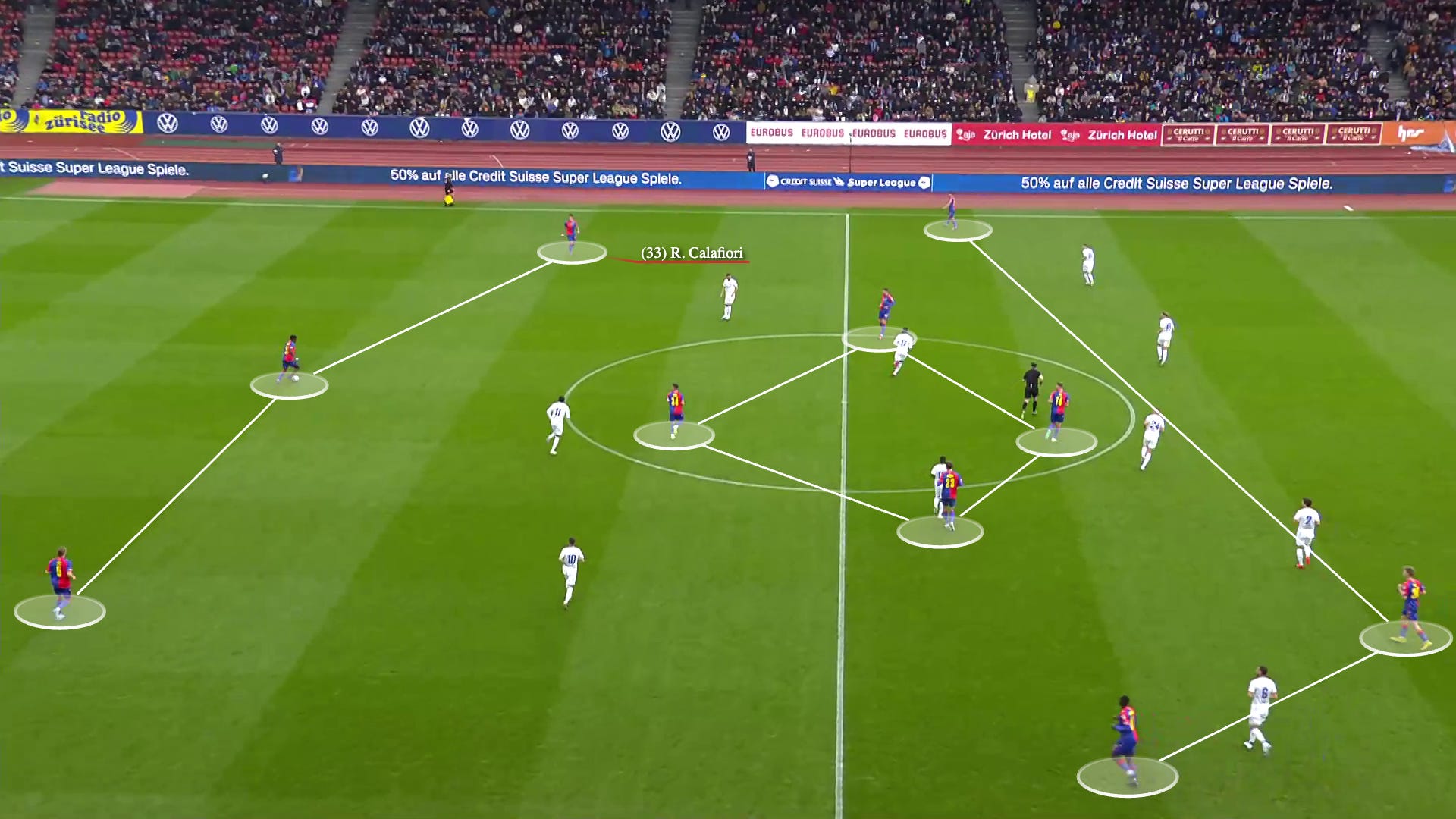


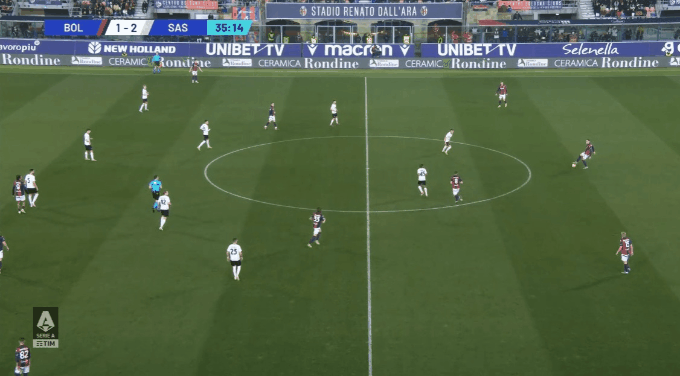






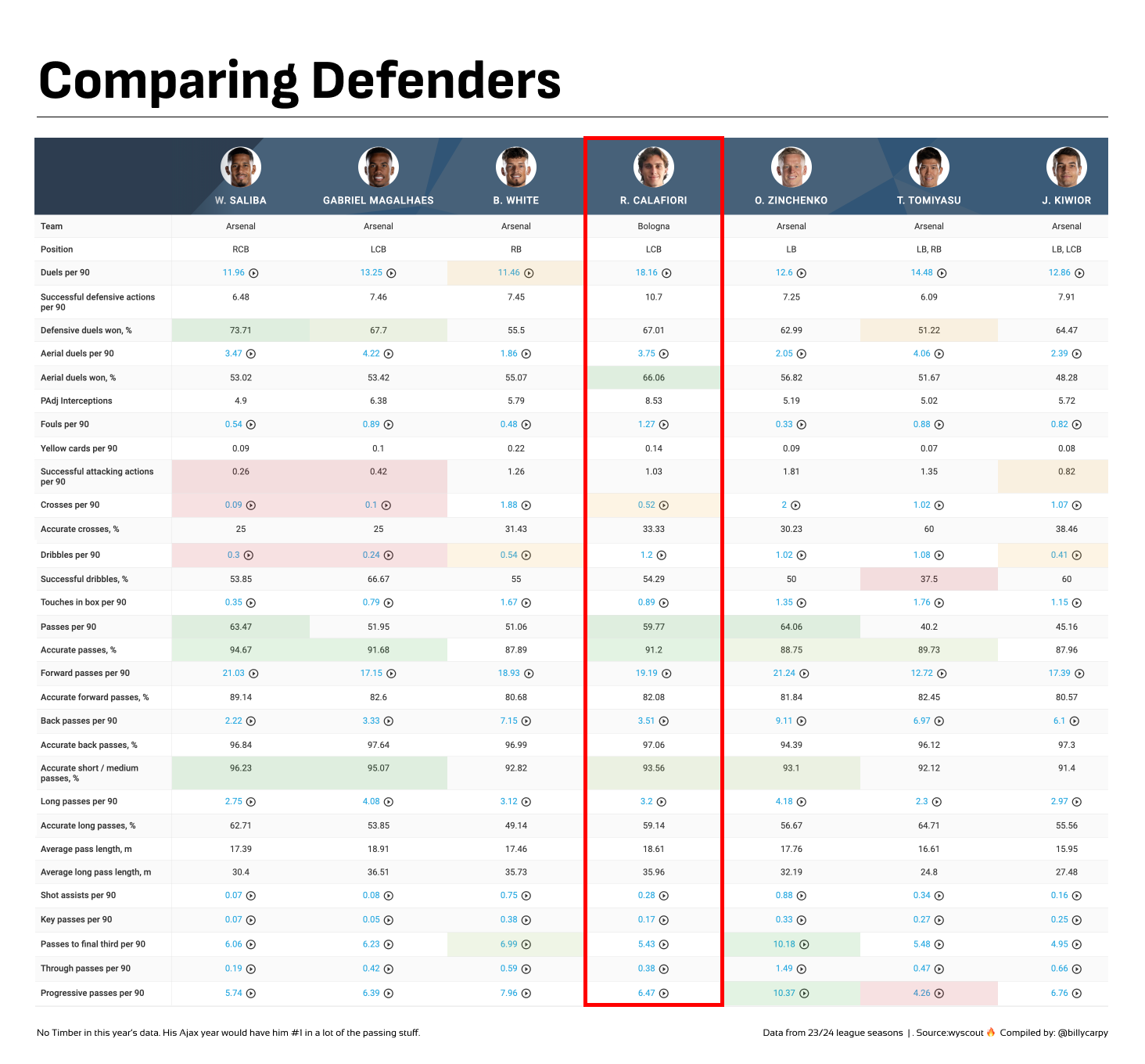












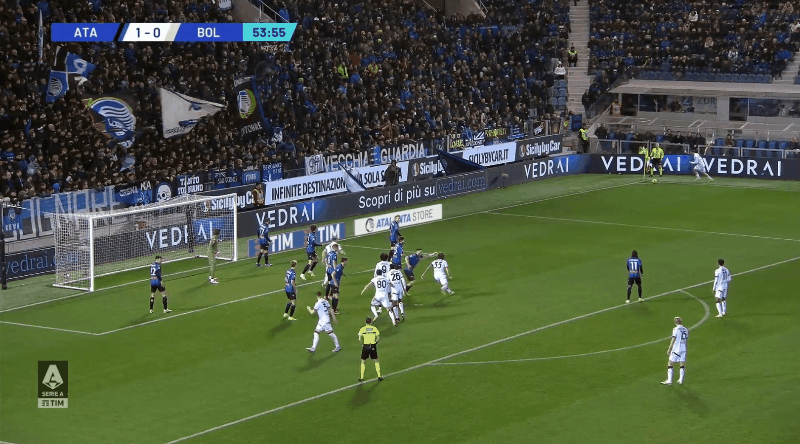








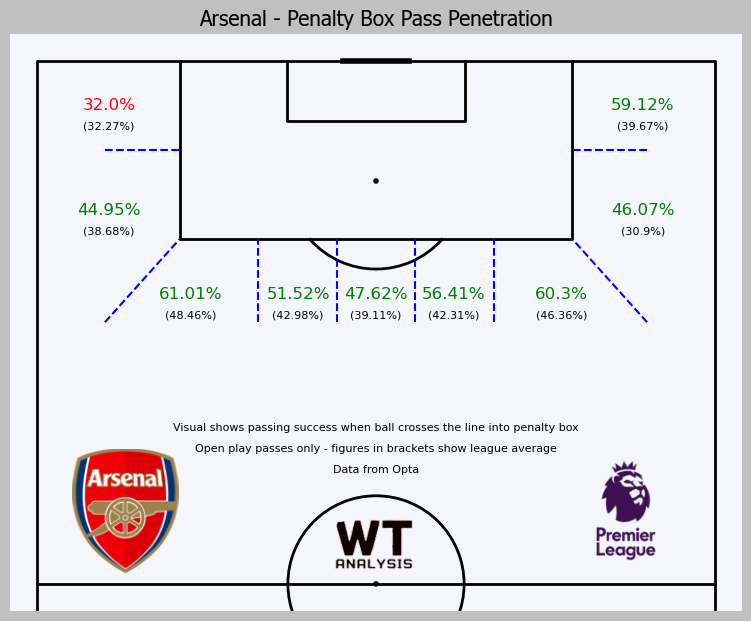


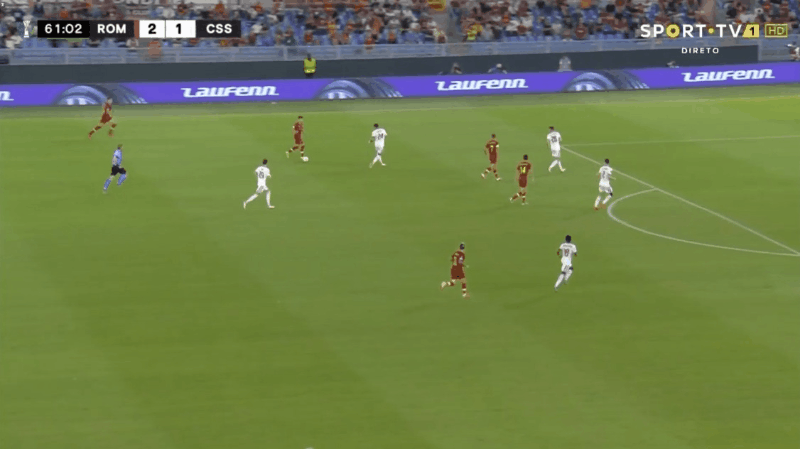




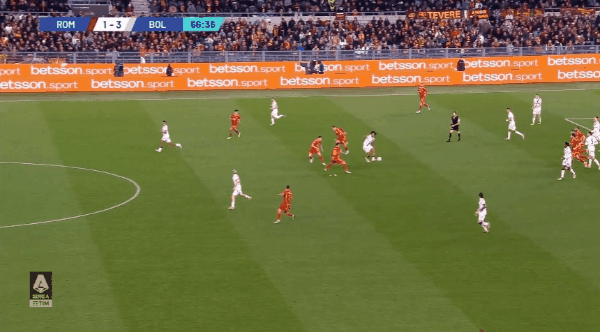

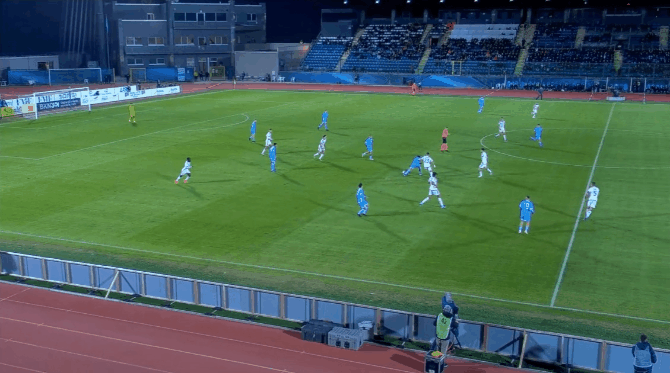



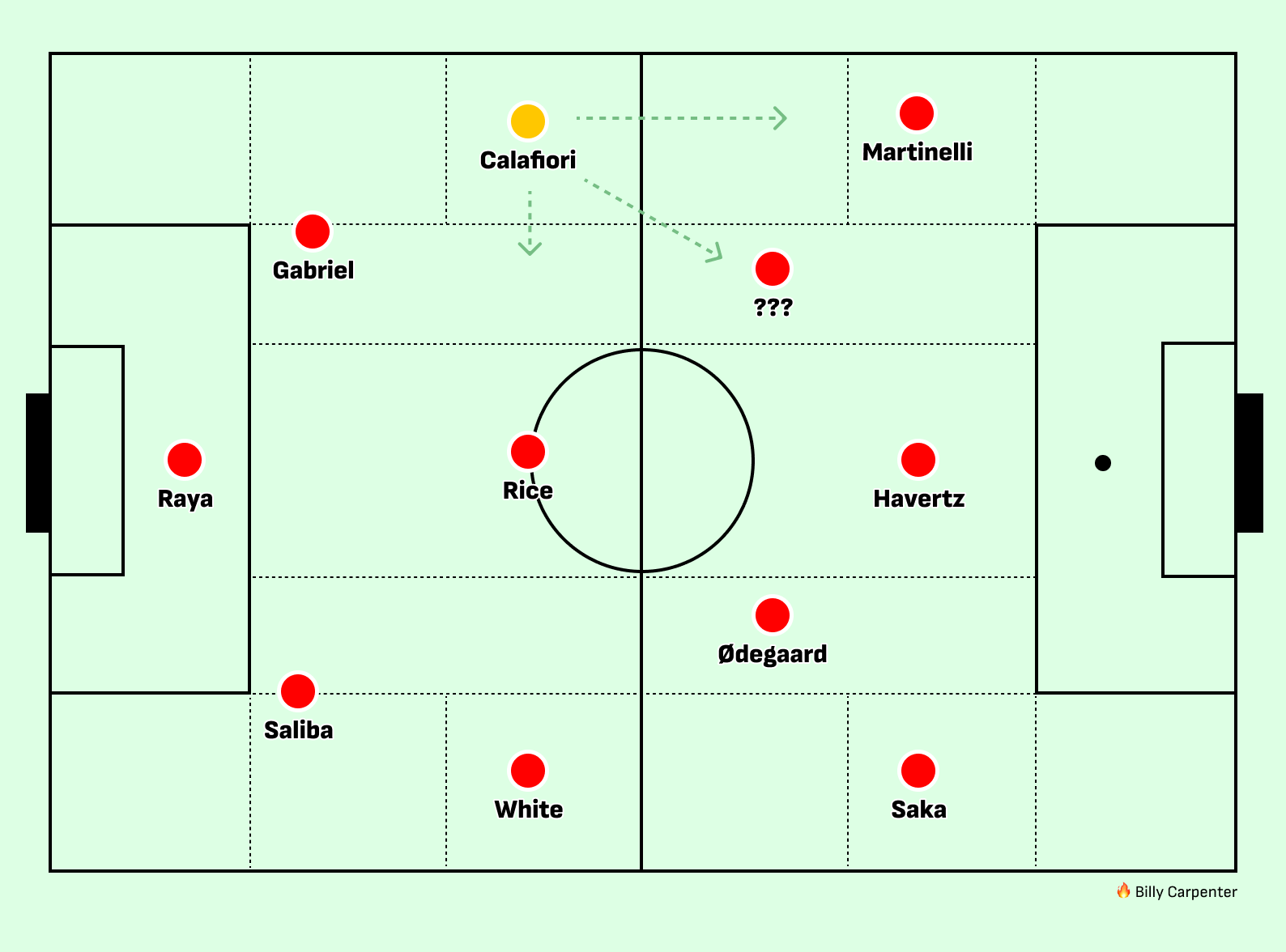





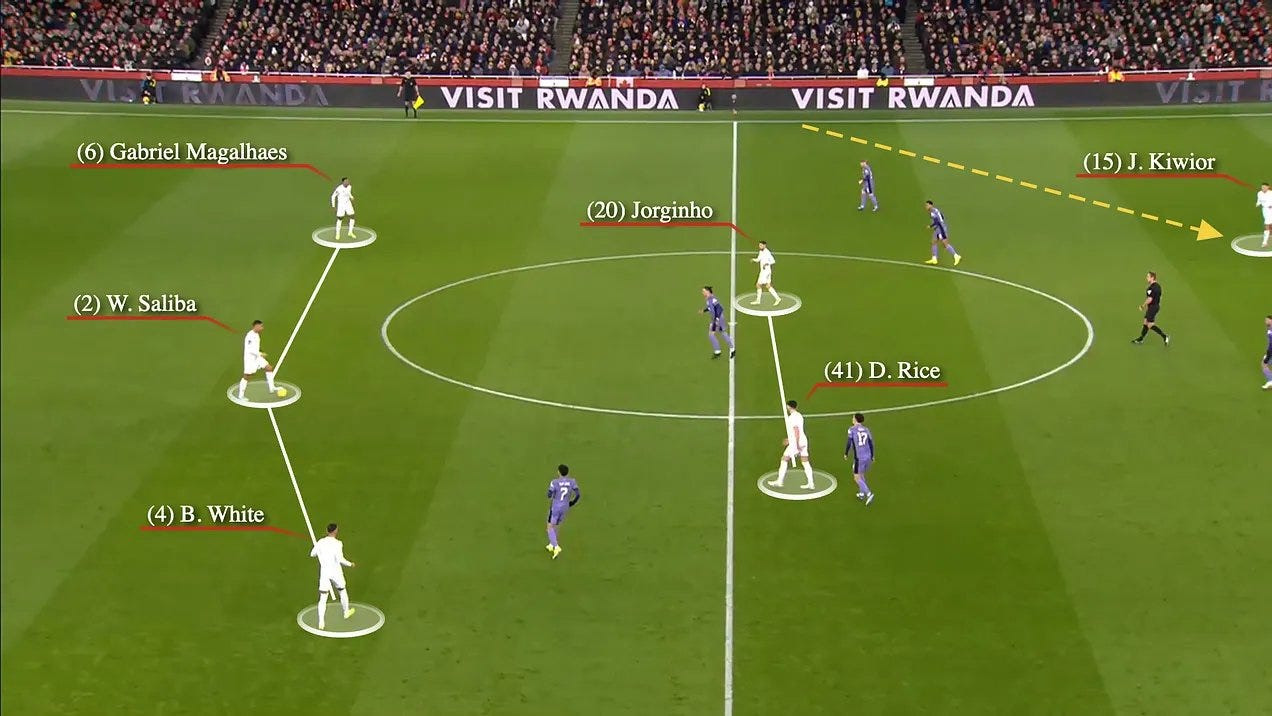
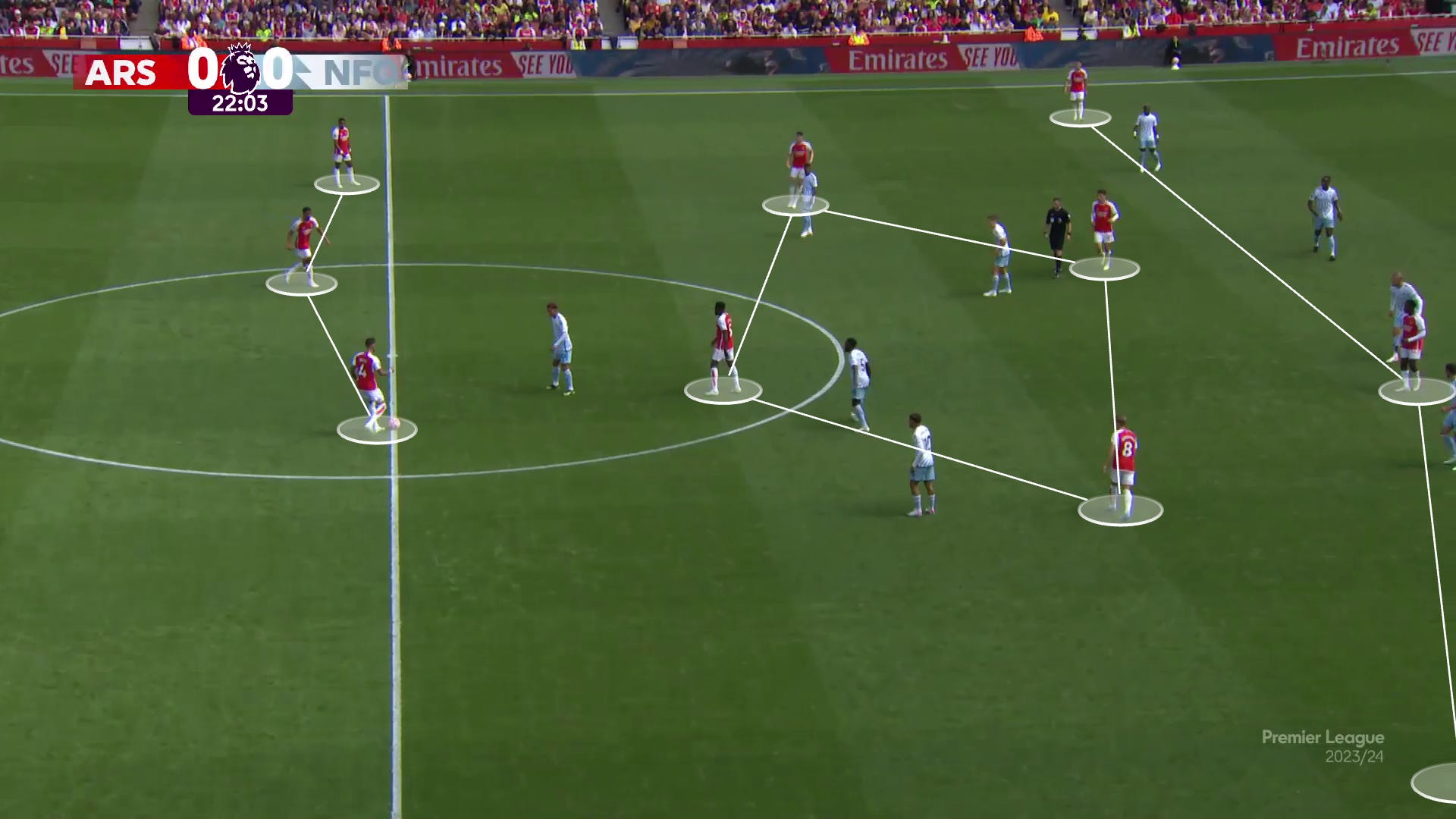


Bloody hell, this is an excellent piece. Thanks for sharing what looks like hours of research!
Many thanks to your kid for their sacrifices in bringing this wonderful piece together.